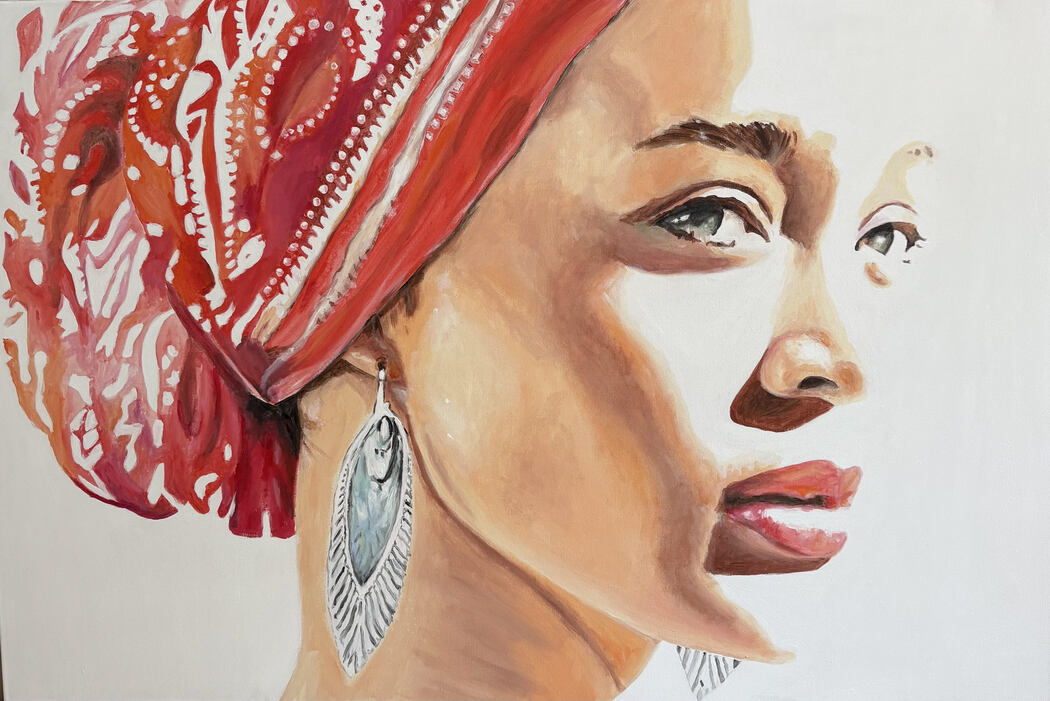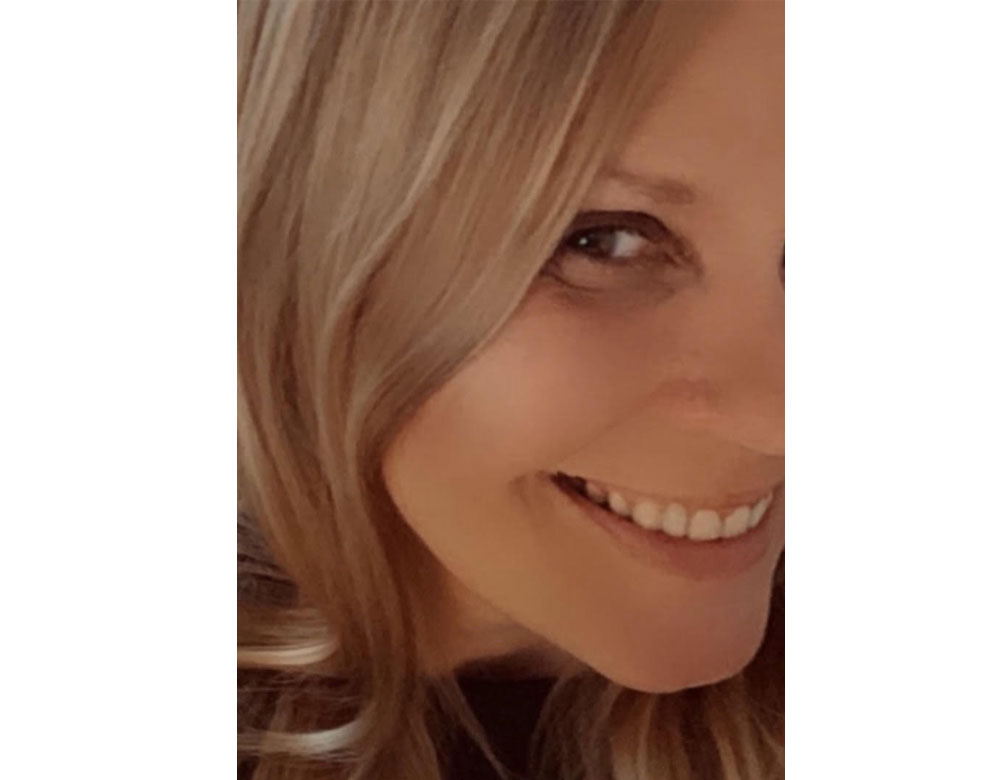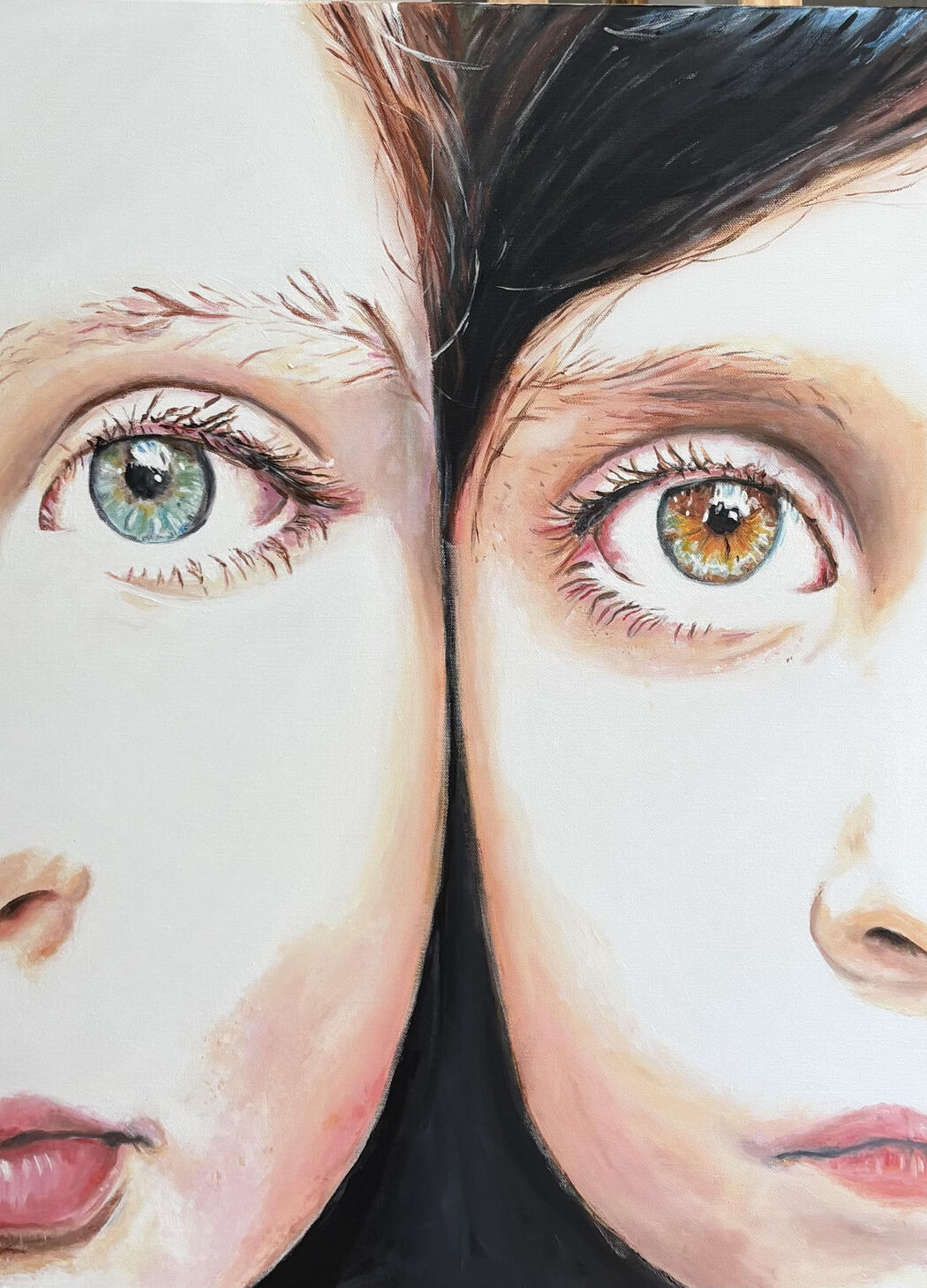Alexandra Schaffer
Year of birth: 1971.
Where do you live: Rome.
Your education: Special education and speech therapy.
Describe your art in three words: Light, Reduction, Transcendence.
Your discipline: Acrylic painting.
Instagram
You mentioned that light in your paintings is not just a tool but a space of expression. How did you come to this unique understanding of light?
Yes, light is something very special to me. I love light. I love the sun. I love the play of light – that has always been the case. Light, for me, has something alive, almost spiritual. It is not just a means to make things visible, but a space where emotions can arise and intensify.
Even before I devoted myself intensely to painting, playing with light was a theme for me – for example, in photography, which I have always loved. I realized early on that light can tell a story without words, without many details.
In painting, this means for me: conscious omission, playing with white space, with shadows and suggestions. I believe that reduction holds great power. When a part of the face disappears or is merely hinted at with a few lines, the light suddenly gains a voice. It becomes the true bearer of emotion – not an accessory, but the centerpiece.
This special understanding of light didn’t emerge from theory, but through practice. Through painting, over and over, and through consciously letting go of photographic precision. I never wanted to paint hyper realistically. So I started to experiment – with surfaces, with contrasts, with openness. And over time, these bright zones developed, which today are a central means of expression in my work.
This has created a space for me where light does not just illuminate – it tells a story
What inspired your transition into full-time painting only two years ago, despite art always being important in your life?
Painting has always been a part of me. From early on, I felt a fascination for capturing people and their faces. I grew up in a creative environment – my father was a commercial artist in Austria and still paints with great passion. This artistic atmosphere at home had a profound influence on me. Art, drawings, colors – all of that was always present.
Later I worked as a special education teacher and speech therapist – a profession that is also very close to people, their emotions, their expressive power. This closeness to the human element has never left me. But there was hardly any space for my own artistic work. Life, family, daily responsibilities – all of that takes precedence at first.
About two years ago, I reduced my working hours to create more space for myself. And suddenly it was there – the urge to paint. It overwhelmed me. What began with a few paintings quickly turned into a deep passion. Today, I use every free moment to paint.
It’s as if I rediscovered something that had always been inside me – but is now finally allowed to be.

Your portraits use intentional white space and soft transitions how do you balance realism with abstraction?
I don’t use light to show something – but to make something felt.
For me, omission is just as important as what is visible. I love those intentional white areas in my paintings – they’re not accidental, but a central part of my visual language. Often, a part of the face remains almost unfinished, merely suggested through light, shadow, or a few lines. The ear, the contours, sometimes even an entire side of the face dissolve into white.
This creates a field of tension: between what is present and what is missing. And my work moves precisely within that space – between realism and abstraction. I’m not trying to achieve photographic perfection. What interests me is what resonates within a person: their emotion, their essence.
I believe that great power lies in reduction. The viewer is invited to fill in what is not shown with their own perception. And that is what creates depth. The balance between the tangible and the open-ended emerges almost naturally – from a feeling.
Emotions play a central role in your work. Do you begin a piece with a specific emotion in mind, or does it emerge through the process?
Yes, emotions are central to me – not just in my art, but in my life. I have always been fascinated by people. Perhaps that’s also due to my profession: As a special education teacher, it’s about truly engaging with each person and finding their individual access point. I bring that same approach to my painting.
When I start a piece, I don’t intentionally search for a specific emotion – but I choose a subject that stirs something within me. It has to touch me, captivate me, immediately create a connection. That is the starting point. But during the painting process, much changes. I bring myself into the work – my inner world, my perspective, my feelings.
Each painting thus carries a part of me. The emotions evolve during the process – they condense, shift, deepen. It is my interpretation, my experience that ultimately becomes visible on the canvas.
How does your background, growing up in Vienna and now living in Rome, influence the themes or style of your artwork?
In Vienna, I grew up with art …. in Rome, I’m surrounded by it.
I was born in Vienna, a city of deep cultural richness, and I’ve been living in Rome for 24 years – for me, the heart of art. Even in Vienna, art was a natural part of my life: my home, my surroundings, the tradition, the drawing – all of that shaped me. But Rome opened up something entirely new in me.
Here, art is everywhere. Whether it’s architecture, painting, or sculpture – in Rome, you live in an open-air museum. I love this city, its sensuality, its history, its warmth – and the great Italian painting tradition. All of that has broadened my view, influenced my visual language, and enriched my expression.
I consider it a great gift to live between these two worlds. Different cultures, different languages, different approaches to art – all of this flows into my work. It has changed me as a person and as an artist – and that’s exactly what characterizes my work today.
Many of your works depict children and women with a deep, almost silent intensity. What draws you to these subjects?
Many of my works depict women and children – not as a conscious choice, but because to me they embody a special presence of silence and inner truth. Their faces often carry a deep, almost silent intensity that touches me again and again.
Perhaps it’s precisely this quiet language of emotions that fascinates me so much – what lies between the words, between gaze and gesture. In a time where much is quickly consumed, I want my paintings to create a counterbalance. A moment of slowing down, of pausing.
My figures don’t speak loudly, yet they tell so much. They don’t demand attention – they invite you to look. Truly look. Because I believe there is great strength in vulnerability.
I’m not concerned with outer perfection, but with the inner world. With what remains when everything external falls silent. That’s where I find the true portrait of a person.
And perhaps that is the most beautiful task of art: to remind us that, in all our differences, there is something that connects us – the feeling of being human.
Could you tell us more about your technique with acrylics that achieves such softness and atmospheric depth?
At first, working with acrylic paints was primarily a practical decision for me – because I paint at home. They might be considered less refined than oil paints, but despite the initial challenges in achieving the desired gradients, they allowed me to find my colors. Colors I wouldn’t want to do without today.
What fascinates me most about this medium is its versatility and expressive power. I’ve learned how to create a special softness with acrylic – almost like a veil gently laid over the face.
Over time, the faces in my paintings have changed a lot. At the beginning, they were more subdued in color, closer to the natural reference. Today, I work more freely, more boldly. I use stronger tones, moving further away from realism – not deliberately, but simply because that’s how it unfolds.
The technique evolves along with me. I feel that my way of painting is becoming increasingly intuitive. And that’s exactly what makes acrylic so fitting for me: I can work quickly, build up layer by layer, keep transitions soft, and let emotional depth emerge. It’s as if the paint itself helps shape the work.




Leave a Reply